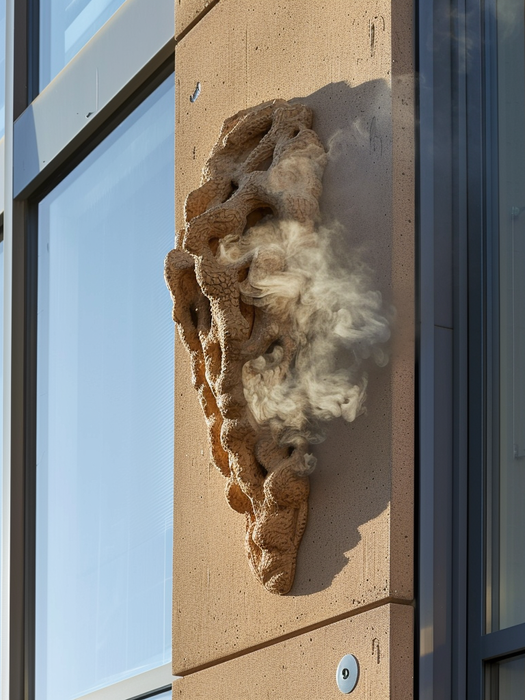
TERMITE VENTS
.
.
Risk :
EXTREME HEAT
Type :
Cooling
Possibility :
Possible
Scale :
Household
What does it do?
Automated venting system designed to expel hot air during the warmest parts of the day.
Type :
How does it work?
Functions by using temperature sensors to monitor indoor and outdoor conditions. When indoor temperatures rise above a set threshold, the control unit signals the vent actuators to open, allowing hot air to escape and cooler air to enter. Conversely, when temperatures drop, the vents close to retain indoor warmth.
The system leverages natural airflow, mimicking the chimney effect observed in termite mounds. Hot air rises and is expelled through upper vents, while cooler air is drawn in through lower vents, using convection currents to naturally regulate indoor temperatures. Solar-powered options enable the system to operate independently of the electrical grid, enhancing energy efficiency and sustainability.
Smart integration allows users to monitor and control the system remotely via a smartphone app, adjusting settings as needed to optimise performance. Programmable schedules can be set to anticipate daily temperature patterns, ensuring the system operates at peak efficiency during the warmest parts of the day.
Quiet operation ensures that the system does not disturb household activities, while insect screens on the vent covers prevent pests from entering the home.
Benefits
The system offers numerous benefits in maintaining a comfortable home environment. Inspired by the natural ventilation systems of termite mounds, which regulate temperature through a series of air passages, the vents expel hot air during peak heat periods, reducing the need for energy-intensive air conditioning. This ensures that indoor spaces remain cool and breathable, even in the most intense heat.
Designed for integration into household ventilation systems and walls, the automated vents open and close based on temperature readings, providing hands-free operation. This adaptive approach helps prevent heat buildup, enhancing indoor air quality.
Moreover, by using natural airflow and ventilation, the system minimises reliance on mechanical cooling, offering a robust solution for managing high temperatures. This feature is particularly beneficial as an adaptation to rising temperatures and increasing energy costs.
Materials & design
The system is constructed from durable, weather-resistant materials such as high-grade stainless steel and UV-resistant plastics to ensure longevity and reliable performance. Key components include temperature sensors, automated vent actuators, and control units.
Temperature sensors are strategically placed to monitor indoor and outdoor temperatures, ensuring accurate and responsive vent operation. Automated vent actuators use small, efficient motors to open and close the vents based on sensor readings. The control unit integrates the system, allowing for programmable settings and manual override if needed.
The vent design takes inspiration from termite mounds, which use convection currents to regulate internal temperatures. These natural structures create a chimney effect, expelling hot air and drawing in cooler air through lower openings. Similarly, the system's vent covers include screens to prevent insects from entering while allowing maximum airflow.




